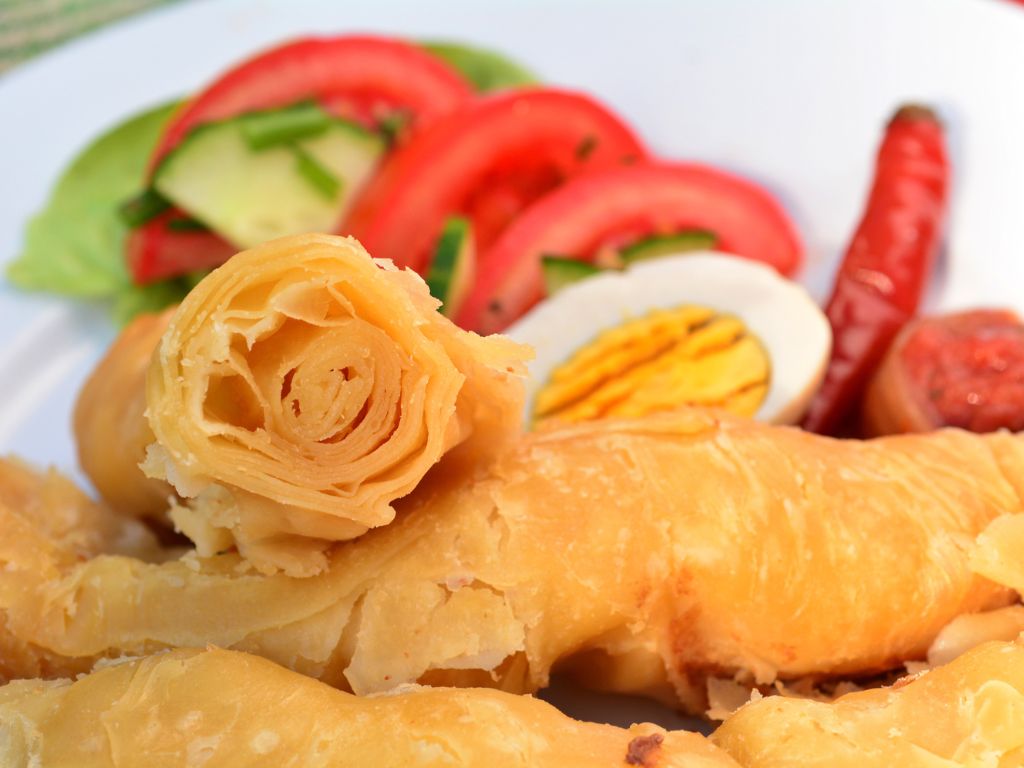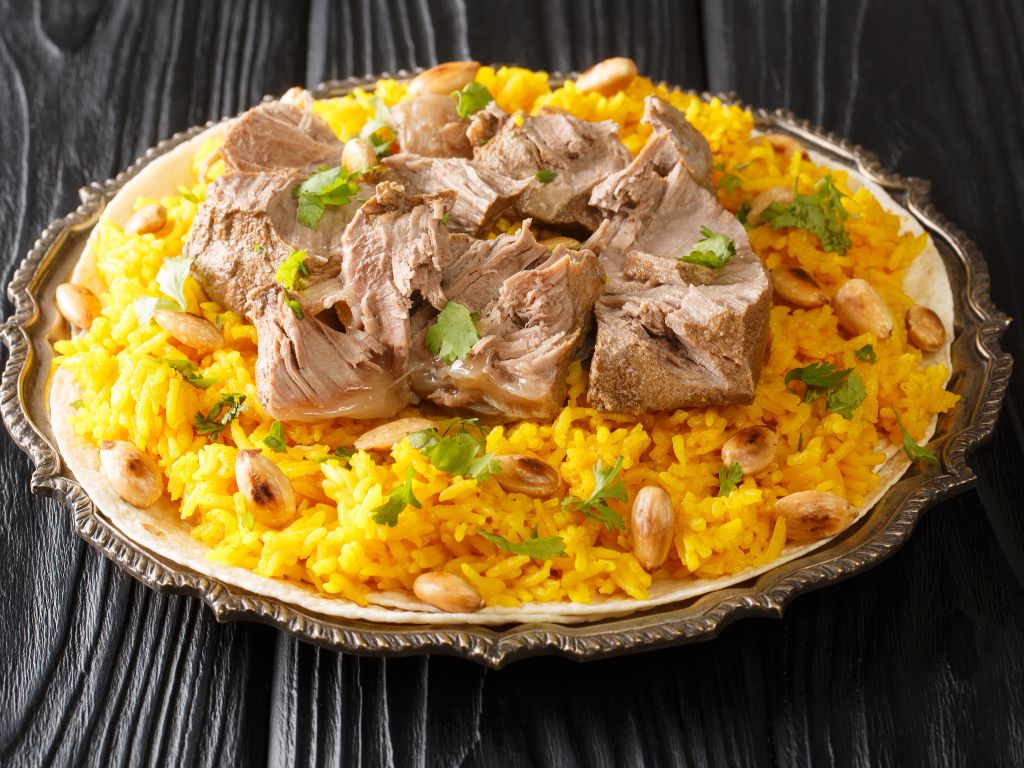A Food Fun Travel Guest Post
If you’re the kind of person that’s always looking for a new culinary experience when you take a vacation, then look no further than two countries in the Middle East that are guaranteed to tantalize your tastebuds and leave you longing for more.
Israel and Jordan, which share both a border and friendly relations, are a veritable paradise for any foodie, with diverse and rich cuisines that have developed as a result of the endless cultures that have influenced their societies over thousands of years – From upscale and gourmet restaurants to humble street food, let’s have a look at what you can expect to be sampling if you visit this region; no wonder so many foodies like to take Petra Tours from Tel Aviv to experience both countries.
Classic dishes you’ll find both in Israel and Jordan
- Hummus – Hummus is one of the most popular dishes in both Israel and Jordan. It is made from mashed chickpeas, tahini (sesame seed paste), lemon juice, and garlic, and is typically served with pita bread. Hummus can be eaten as a dip, a spread, or a main course.
- Falafel – Probably the most popular street food, both in Israel and Jordan, falafel are deep-fried crispy balls, made out of chickpeas, herbs, and spices. The most popular way to serve them is in a pita with tahini, hummus, salad, and pickles, but you’ll also find them in many restaurants. Truly, little bites of heaven – and vegan too!
- Tabbouleh – made from tomatoes, cucumbers, and bulgar wheat, and seasoned with mint, parsley, and lemon juice this is a healthy and light salad that is often served as a side dish,
- Meze – Meze is the Middle Eastern equivalent of Spanish must-try small plates of snacks and appetizers, usually served before the main course arrives. As well as the staples of hummus and falafel, expect to sample dolmades (stuffed grape leaves), baba ganoush (a delicious aubergine dip), tzatziki (a refreshing combination of yogurt and cucumber), and a variety of grilled vegetables.
- Shawarma and Kebab – for all the carnivores out there, both shawarma and kebabs will surely satisfy your need for some red meat. Whether it’s roasted on a spit and then shaved off and served in pitta bread, or grilled and served on skewers, you’ll be in heaven.
Classic Israeli and Jordanian desserts
For anyone with a sweet tooth, desserts in Israel and Jordan are to die for.
- Baklava – this delicious filo pastry, filled with chopped nuts and sweetened with syrup, is the perfect accompaniment to a cup of hot sweet tea.
- Halva – made of crushed sesame seed, tahini, and honey – is a perfect pick-me-up when you need afternoon energy.
- Malabi – an iconic dessert in this region, malabi is a creamy milk pudding, flavored with rosewater/orange/pomegranate – a kind of Middle Eastern blancmange!
- Knafeh – made with layers of spun pastry, filled with sweet cheese then drenched in rosewater syrup, kanfeh is something every visitor to this region has to try at least once.
Classic Israeli Dishes

- Jachnun – originating from Yemen, this dish is made from a dough that’s cooked long and slow in the oven, overnight. This, interestingly, gives it a slightly sweet flavour. Traditionally served with a roasted egg and spicy tomato salsa, it’s often served on the Jewish sabbath, for breakfast.
- Shakshuka – a tried-and-tested favourite, shakshuka comes from Tunisia and consists of eggs baked in a tomato/red bell pepper sauce, spiced up with paprika, cumin, and cayenne pepper. The perfect Israeli brunch food to leave you full and smiling.
- Malawach – brought to Israel by Yemenite Jews in the 1950’s, malawach(which is made with the same dough as jachnun) is a flaky and buttery flatbread, fried in the pan, and simply irresistible when you’re in need of comfort food.
Classic Jordanian Dishes

- Mansaf – The national dish of Jordan, Mansaf is loved by locals and visitors alike. Made from lamb which is cooked in a fermented yogurt sauce (‘jameed’) and usually served with rice or bulgar wheat and vegetables, it’s often served on special occasions, it’s a recipe that is found in every Arabic cookbook! A must try on any visit to Jordan.
- Makloubeh – meaning ‘upside down’ in Arabic, this is a classic Middle Eastern dish made of lamb, rice, and vegetables (including eggplant, cauliflower), and tomatoes, which is then flipped upside down before being served. Fragrant and comforting, it’s a staple recipe in any Jordanian household.
- Zarb – a zarb is a traditional oven used by the Bedouins (nomads who have inhabited the Arabian peninsula for thousands of years) Traditionally made of sheep, goat, or chicken and served with vegetables, it’s slow-cooked in an underground pit to accentuate flavors. The Bedouin version of barbeque!
What’s the best way to learn about local food when visiting Israel and Jordan?
- Take cooking classes. It’s a great way to learn about local delicacies and the people that cook them. Many take place in the organiser’s home and, in some instances, you’ll be taken round a local market first, to buy the ingredients you’ll be using. Once you’ve cooked your dish, you’ll sit around a table with your host and others and break bread together.
- Visit a food festival. Food festivals are popular in both countries and a great way to see what the locals are cooking (and eating) as well as meet other foodies.
- Wander the local markets. The markets (‘shuk’ in Hebrew and ‘souk’ in Arabic) are amazing place to pick up fresh produce, spices, and sample street food. It’s the ultimate way to see what locals are buying and eating – and it’s easy on your wallet too!


